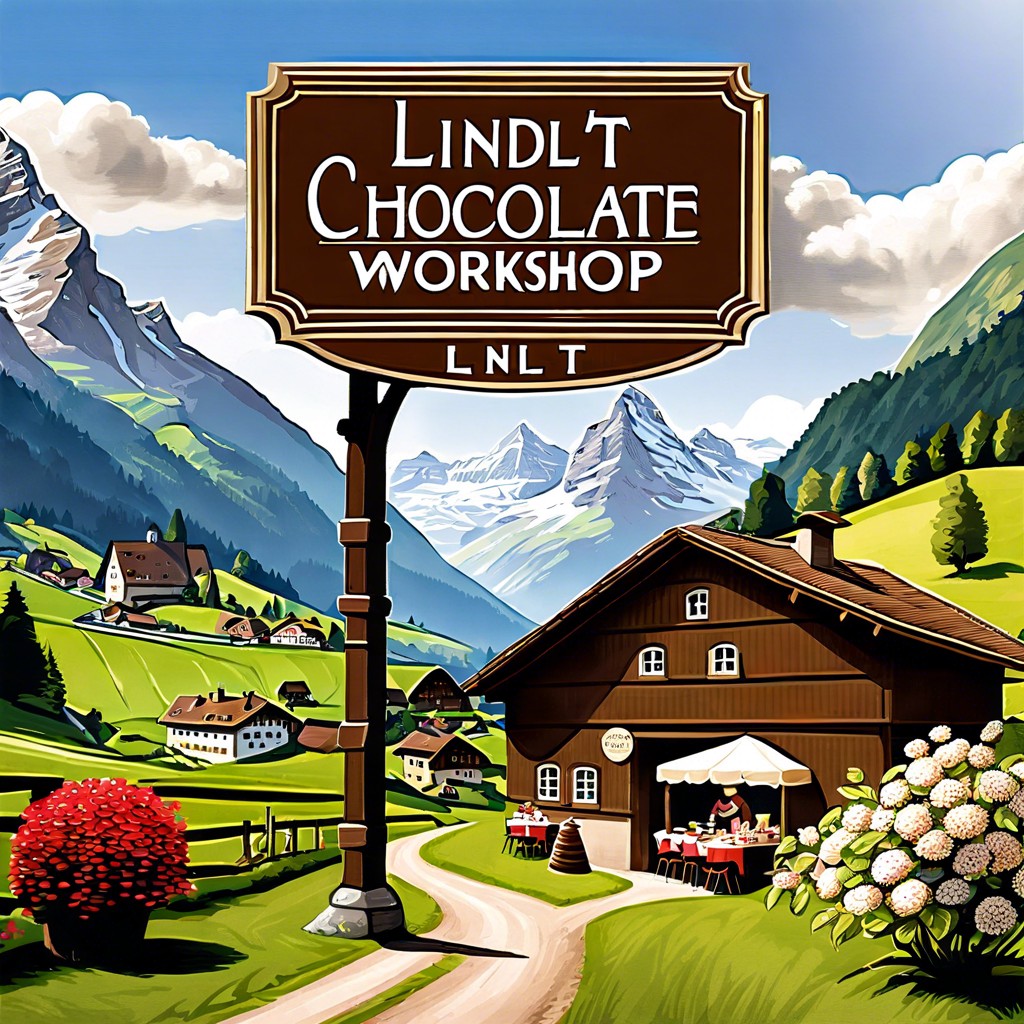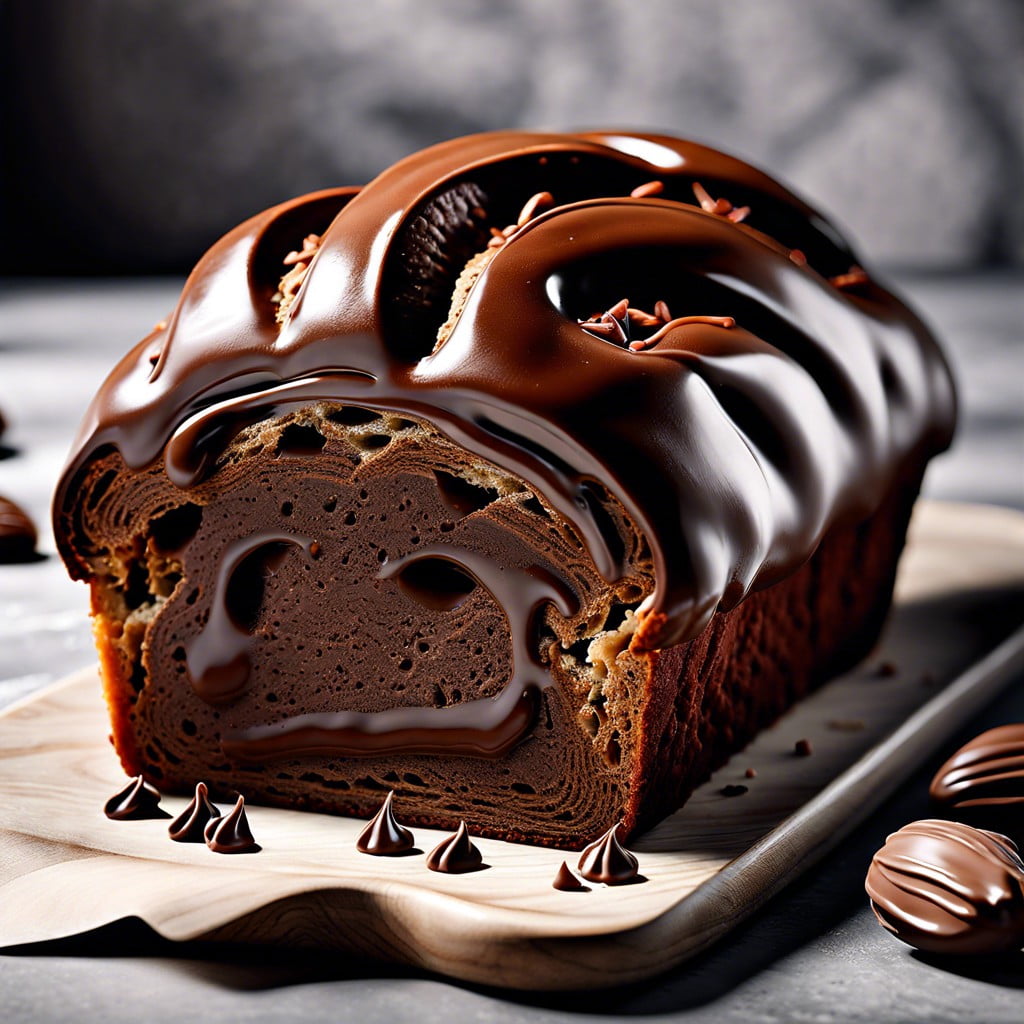Discover the process and passion behind Lindt chocolate, from cocoa bean selection to the creation of smooth, indulgent treats.
Key takeaways:
- Lindt’s history dates back to 1845, with key milestones in chocolate innovation.
- Lindt & Sprüngli has expanded globally, with strategic acquisitions and retail ventures.
- Lindt’s chocolate-making process includes careful selection, refining, and tempering.
- The company is committed to sustainable practices, from responsible sourcing to energy efficiency.
- Lindt prioritizes social responsibility and transparency in their corporate operations.
Inside
History of Lindt

Stepping into the annals of chocolate history, we whisk back to 1845 Zurich, where David Sprüngli-Schwarz and his son Rudolf began their confectionery adventure, not realizing they were paving the chocolate highway for generations. An early milestone was the courageous move to fashion a solid form of chocolate—delighting the palates of Swiss locals and eventually the broader European market.
Fast-forward to 1879, and Rodolphe Lindt, the man behind the magic, revolutionized the chocolate industry with his invention of the conching machine. This pivotal innovation ushered in the era of velvety smooth chocolate by improving texture and flavor through rigorous refinement of cocoa particles.
The marriage of Lindt’s pioneering process and Sprüngli’s market savvy birthed Chocoladefabriken Lindt & Sprüngli. Each step forward from this strategic merger was marked by an unwavering commitment to quality and a knack for expanding a once local treasure into an international sensation.
By the turn of the century, Lindt’s chocolate had already set sails across oceans and carved a niche in the hearts of chocolate aficionados worldwide. The brand has continued to flourish, becoming synonymous with Swiss chocolate excellence—captivating taste buds and turning casual snackers into devout chocoholics.
Expansion of Lindt & Sprüngli
From its Swiss roots, Lindt & Sprüngli has blossomed globally, establishing a presence in over 120 countries. The journey of growth began with local factories and gradually spread overseas, planting the seeds for a world-renowned chocolate empire.
Acquisitions have played a pivotal role in this expansion. In 1997, Lindt acquired Ghirardelli, tapping into the US market with one of America’s oldest chocolate companies. This strategic move paved the way for other key purchases, including those of Russell Stover and Whitman’s, further solidifying Lindt’s footprint in the United States.
Retail also revolutionized Lindt’s accessibility. The launch of exclusive Lindt Chocolate Shops and the introduction of Lindt Chocolate Cafés offered chocolate lovers a direct avenue to indulge in premium confections and experience the brand’s rich heritage firsthand.
Innovation hasn’t just been product-deep. Lindt’s expansion is marked by the adoption of cutting-edge production technology to meet growing global demand without compromising the signature quality that defines its chocolate.
Lastly, the partnership with renowned tennis champion Roger Federer as Lindt’s brand ambassador exemplifies a match as smooth as their chocolate, extending Lindt’s appeal to a broad audience and underscoring their commitment to excellence.
The Lindt Difference: Process of Crafting Lindt Chocolate
Lindt’s chocolate-making venture begins with selection. Only the finest cocoa beans are chosen, after which they are blended to create a characteristic taste profile.
The magic unfolds in the refining stage, where chocolate achieves its silky texture. Lindt prides itself on an extra step, conching, a prolonged stirring process, which serves multiple purposes. First, it smoothens the chocolate; second, it enhances flavor through aeration, and finally, it eliminates undesirable acidity.
Temperature plays a pivotal role in determining the chocolate’s finish. Through precise tempering, a delicate balance between temperature and time ensures the chocolate crystallizes impeccably, resulting in a glossy appearance and a satisfying snap.
Quality control is relentless. At every stage, from bean to bar, nothing escapes the critical eye. Consistency and flavor have to hit the mark each time, reaffirming the brand’s reputation as a premium chocolatier.
Home bakers and connoisseurs alike acknowledge the usability of the product. Melting uniformly and mixing smoothly with other ingredients, Lindt chocolate elevates every recipe it graces.
Lindt Sustainable Practices
Navigating the fine balance between indulgence and accountability, Lindt recognizes that good chocolate shouldn’t leave a bitter aftertaste of environmental harm. The company has rolled out a series of initiatives aimed at reducing its carbon footprint and fostering ethical practices.
From bean to bar, there’s a commitment to respect Mother Nature. By partnering with farms that practice ethical cultivation techniques, Lindt helps protect ecosystems. Cocoa beans are sourced responsibly, prioritizing both the welfare of farmers and the conservation of biodiversity.
Energy consumption is a critical focus area. Lindt invests in energy-efficient technologies in its production facilities, aiming to lower emission rates and implement renewable energy sources where possible. This effort extends to waste reduction, with rigorous recycling programs in place at manufacturing sites.
The cocoa, the core of it all, is where social responsibility takes the spotlight. Through programs like the Lindt & Sprüngli Farming Program, the company aids in providing training and resources for farmers, ensuring their communities thrive alongside the crops.
Milk is as much part of the chocolate equation as the cocoa. That’s why sourcing from local dairies not only locks in freshness but also cuts down transportation emissions, supporting both local farmsteads and the environment.
Through these practices, Lindt demonstrates a deep-seated commitment to paving a path for a sustainable future while still delivering high-quality chocolate experiences.
Lindt Corporate Responsibility and Shareholder Information
At the core of Lindt’s operations is a steadfast commitment to social responsibility and stewardship. This extends to their dedication to providing stakeholders with transparent insight into the company’s performance and ethical practices.
To start, Lindt & Sprüngli is proactive in sourcing coco beans directly from farmers, ensuring fair trade and supporting sustainable farming communities. This initiative not only boosts the quality of life for farmers but also secures a premium quality of cocoa essential for their signature chocolates.
Attention to the environmental impact is also pivotal for Lindt. The company invests in energy-efficient production methods and is meticulous in reducing its carbon footprint. They employ innovative waste reduction and recycling programs in their factories worldwide.
From a financial perspective, investors are kept in the loop with regular reports detailing the company’s performance, market trends, and future prospects. Lindt prioritizes profitability alongside ethics, building trust and stability among shareholders.
Additionally, the firm is involved in numerous charitable ventures and community enrichment programs. For example, initiatives like the Lindt Chocolate Competence Foundation emphasize education in confectionery arts, fostering new talent in the craft of chocolate making.
By balancing corporate success with comprehensive responsibility, Lindt stands not just as a purveyor of fine chocolates but also as a paragon of corporate conscience in action.




